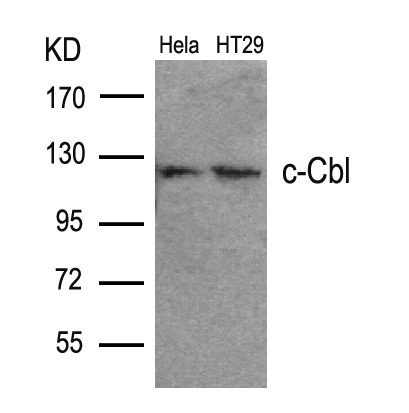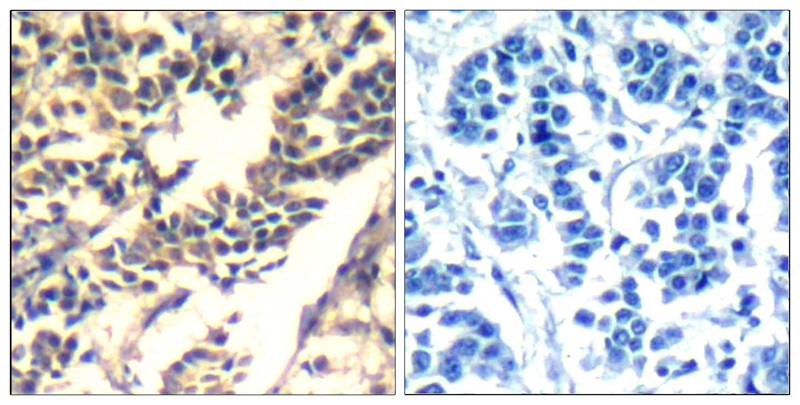Product Detail
Product Namec-Cbl(Ab-700) Antibody
Host SpeciesRabbit
ClonalityPolyclonal
PurificationAntibodies were produced by immunizing rabbits with synthetic peptide and KLH conjugates. Antibodies were purified by affinity-chromatography using epitope-specific peptide.
ApplicationsWB IHC
Species ReactivityHu
SpecificityThe antibody detects endogenous level of total c-Cbl protein.
Immunogen TypePeptide-KLH
Immunogen DescPeptide sequence around aa. 698~702 (T-E-Y-M-T) derived from Human c-Cbl.
Target Namec-Cbl
ConjugateUnconjugated
Other NamesSignal transduction protein CBL; Proto-oncogene c-CBL; Casitas B-lineage lymphoma proto-oncogene; RING finger protein 55;
Accession NoSwiss-Prot: P22681
NCBI Protein: NP _005179.2
Uniprot
P22681
Gene ID
867;
Concentration1.0mg/ml
FormulationSupplied at 1.0mg/mL in phosphate buffered saline (without Mg2+ and Ca2+), pH 7.4, 150mM NaCl, 0.02% sodium azide and 50% glycerol.
StorageStore at -20°C for long term preservation (recommended). Store at 4°C for short term use.
Application Details
Predicted MW: 120kd
Western blotting: 1:500~1:1000
Immunohistochemistry: 1:50~1:100
Western blot analysis of extracts from Hela and HT29 cells using c-Cbl(Ab-700) Antibody #21549.
Immunohistochemical analysis of paraffin-embedded human breast carcinoma tissue using c-Cbl(Ab-700) Antibody #21549(left) or the same antibody preincubated with blocking peptide(right).
Participates in signal transduction in hematopoietic cells. Adapter protein that functions as a negative regulator of many signaling pathways that start from receptors at the cell surface. Acts as an E3 ubiquitin-protein ligase, which accepts ubiquitin from specific E2 ubiquitin-conjugating enzymes, and then transfers it to substrates promoting their degradation by the proteasome. Recognizes activated receptor tyrosine kinases, including PDGFA, EGF and CSF1, and terminates signaling.
Blake, T.J. et al. (1991) Oncogene 6, 653-657.
Thien, C.B. and Langdon, W.Y. (1998) Immunol. Cell Biol. 76, 473-482.
Kamei, T. et al. (2000) Int. J. Oncol. 17, 335-339.
Hunter, C. et al. (1999) J. Biol. Chem. 274, 2097-2106.
If you have published an article using product 21549, please notify us so that we can cite your literature.
et al,Cytoplasmic retention of a nucleocytoplasmic protein TBC1D3 by microtubule network is required for enhanced EGFR signaling.In PLoS One on 2014 Apr 8 by Ze He, Tian Tian et al..PMID:24714105
, (2014),
PMID:
24714105




 Yes
Yes



